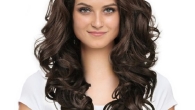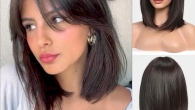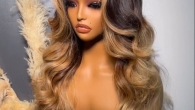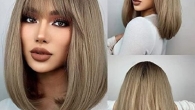
Unleash Your Inner Stylist: A Guide to Curling Synthetic Wigs
For those who love the versatility and ease of wigs, synthetic wigs offer a plethora of styles and colors to choose from. But what if you crave a change from the straight style and want to add some bouncy curls? Curling synthetic wigs can be a bit trickier than curling natural hair, but with the right techniques and tools, you can achieve stunning, long-lasting curls that elevate your wig game.
This comprehensive guide will equip you with everything you need to know about curling synthetic wigs. We’ll explore different curling methods, essential tools, helpful tips, and aftercare practices to keep your wig’s curls looking their best.
Understanding Synthetic Hair and Heat Sensitivity
Before diving into specific curling techniques, it’s crucial to understand the nature of synthetic hair. Unlike human hair, which can withstand high temperatures, synthetic fibers are typically made of plastic and can melt or become damaged when exposed to excessive heat.
Here’s a quick breakdown of the heat sensitivity of different synthetic hair types:

- Kanekalon: This is a commonly used synthetic fiber known for its softness and heat resistance. It can handle low to medium heat settings (around 250°F to 300°F).
- Toy Kanekalon: This fiber type is similar to Kanekalon but is less heat-resistant. It’s best to avoid using heat altogether or use very low settings (around 200°F).
- Acrylic: This is a less expensive synthetic fiber, but it’s also the least heat-resistant. It’s not recommended to use heat styling tools on acrylic wigs.
Knowing your wig’s fiber type is vital to choosing the safest and most effective curling method.
Heat Styling Methods for Synthetic Wigs (with Caution!)
If your wig is made from heat-resistant synthetic fibers like Kanekalon, you can cautiously use heat styling tools to achieve curls. Here are two popular methods:
1. Curling Iron:
- Preparation: Always test a small hidden section of the wig on a low heat setting first to ensure the fibers can handle the temperature.
- Settings: Use a curling iron with adjustable heat settings and keep it on a low to medium setting (around 250°F to 300°F).
- Sectioning: Work with small sections of hair to ensure even heat distribution and prevent overheating.
- Curling Technique: Wrap the hair section around the curling iron barrel and hold for a few seconds (around 10-15 seconds) depending on the desired curl tightness.
- Cooling: Let the curl cool completely before handling it to set the shape. You can use a wig stand or place the wig on a flat surface to cool.

2. Curling Wand:
- Preparation: Similar to the curling iron, test a small section on a low heat setting first.
- Settings: Use a curling wand with adjustable heat and keep it on a low to medium setting.
- Sectioning: Section the hair as you would for a curling iron.
- Curling Technique: Wrap the hair section around the curling wand barrel, holding for a few seconds. Unlike a curling iron, a wand doesn’t clamp the hair, so use a gentle rolling motion to create the curl.
- Cooling: Let the curl cool completely before handling.
Important Safety Reminders:
- Always prioritize safety. If you’re unsure about your wig’s heat resistance, opt for heatless methods.
- Never use a flat iron to curl synthetic wigs. Flat irons apply direct heat to both sides of the hair section, which can easily damage synthetic fibers.
- Avoid using high heat settings or holding the heat styling tool on the hair for too long.
- Take breaks while heat styling to prevent overheating the wig.
Heatless Curling Techniques for Synthetic Wigs
If your wig is made from non-heat-resistant fibers or you prefer a heat-free approach, there are several effective ways to achieve beautiful curls:
1. Braid Method:
- Preparation: Lightly dampen the wig with a spray bottle filled with water.
- Braiding: Section the damp hair and braid them tightly into multiple braids. The smaller the braids, the tighter the curls will be.
- Drying: Allow the braids to dry completely. You can air dry them overnight or use a cool setting on a hairdryer.
- Unbraiding: Once the braids are dry, gently unravel them to reveal your beautiful curls.

2. Flexi-Rod Method:
- Preparation: You’ll need a set of flexi-rods, which are bendable foam rods.
- Wrapping: Dampen the hair section slightly. Wrap the hair section around a flexi-rod, starting from the ends and rolling upwards towards the scalp. You can bend the rod to secure the curl in place.
- Drying: Allow the hair to dry completely. Similar to the braid method, air drying or using a cool blow dryer setting works well.
- Removal: Once dry, gently remove the flexi-rods and loosen the curls for a more natural look.
Essential Tools for Curling Synthetic Wigs
Whether you choose heat styling or heatless methods, having the right tools can make the process easier and achieve better results. Here’s a rundown of some essential tools:
- Heat Styling Tools (if using): Curling iron or curling wand with adjustable heat settings.
- Heat protectant spray (optional): While not essential for synthetic wigs, using a heat protectant spray specifically formulated for synthetic hair can add an extra layer of protection when using heat styling tools.
- Wide-tooth comb: For detangling the wig before and after curling.
- Spray bottle: For dampening the hair for heatless curling methods.
- Flexi-rods (optional): For creating defined curls.
- Fabric strips or rags (optional): For creating rag curls.
- Bobby pins: For securing curls and braids.
- Wig stand (optional): For letting the wig cool after heat styling or drying after heatless methods.
Tips and Techniques for Flawless Curls
Here are some additional tips and techniques to ensure you achieve flawless curls on your synthetic wig:

- Start with a clean, detangled wig. Brushing out any tangles before curling will prevent pulling or snagging the fibers.
- Work with small sections. This ensures even heat distribution (for heat styling) and creates more defined curls.
- Don’t hold the heat styling tool on the hair for too long. Synthetic fibers can melt or become damaged with excessive heat exposure.
- Let the curls cool completely before handling them. This allows the curl to set properly and prevents the shape from becoming loose.
- Use your fingers to gently loosen the curls. This creates a more natural and voluminous look.
- Set the curls with a light hold hairspray. This helps the curls hold their shape throughout the day.
- Practice makes perfect! Don’t get discouraged if you don’t achieve perfect curls on the first try. Experiment with different techniques and find what works best for you and your wig.
Unleash Your Style with Curled Synthetic Wigs

With the knowledge and techniques you’ve gained from this guide, you can now confidently curl your synthetic wigs and unlock a world of styling possibilities. Whether you crave beachy waves, bouncy ringlets, or voluminous spirals, there’s a curling method out there to help you achieve your desired look.
Embrace the versatility of wigs and express your unique style with stunning, long-lasting curls!












Leave a Reply